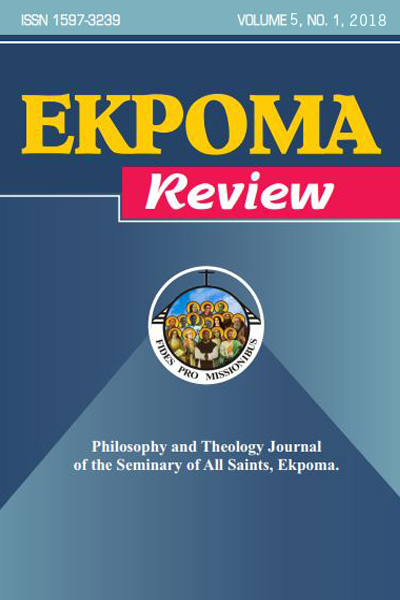THE ECCLESIOLOGY OF THE SECOND VATICAN COUNCIL AS IT AFFECTS THE PARISH: EVOLUTION AND DIMENSIONS
Abstract
The word “ecclesiology” is derived from two Greek words, ekklesia (church) and logia (study). The combination refers to a branch of theology which is the study of the Church. From the earliest time of its existence, the Church has been the subject of theological reflections by Councils, Popes, other ecclesiastical authorities and theologians. The ecclesiology that emerged from the Council is faithful to the objectives its fundamental objectives in SacrosanctumConcilium that include: to bring greater vigour to the Christian life, adaption to the needs of contemporary time, the institutions that are subject to modification, to promote abiding tie of unity among believers, and to strengthen the efforts of evangelization throughout the world. As a transcendent, divine reality that has to do with salvation, the Church is presented as a 1mystery, an object of faith and not merely in its external manifestation but more importantly in its core composition and transcendence.2 Thus, it refers to the invisible Trinitarian presence of God in his Church and particularly also through the sacraments, the ministers and in several other ways, which are all aimed at salvation of the human race. Kloppenburg insists on the point that: “The Church is not the kingdom of God and is not identifiable with the Kingdom of God, but is rather its germ and beginning.”3 Thus, he said the Church “belongs to the time of growth and maturation, and does not possess the glory of fulfilment.”4 It is also the sacrament of salvation through which people would be brought to salvation.5


